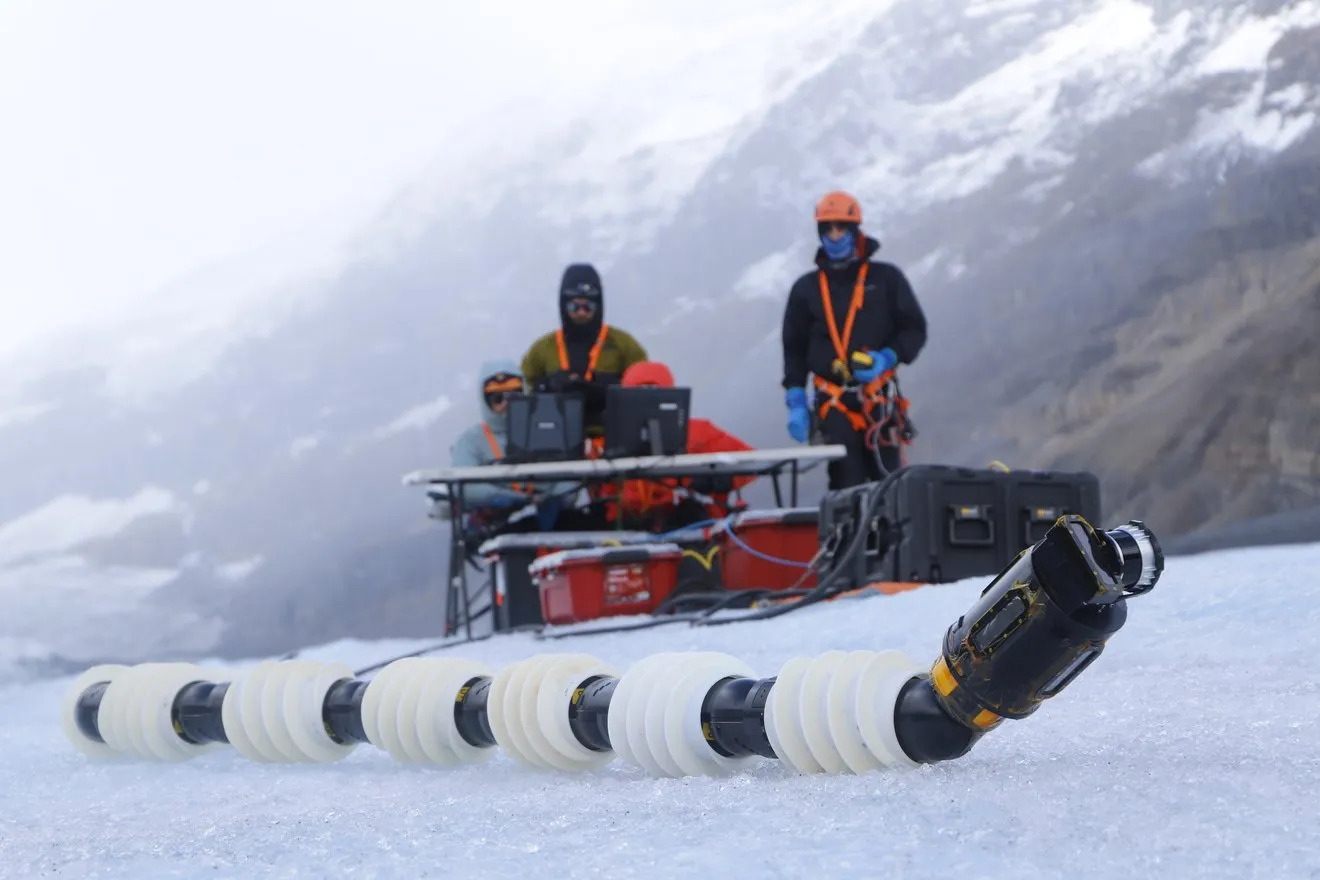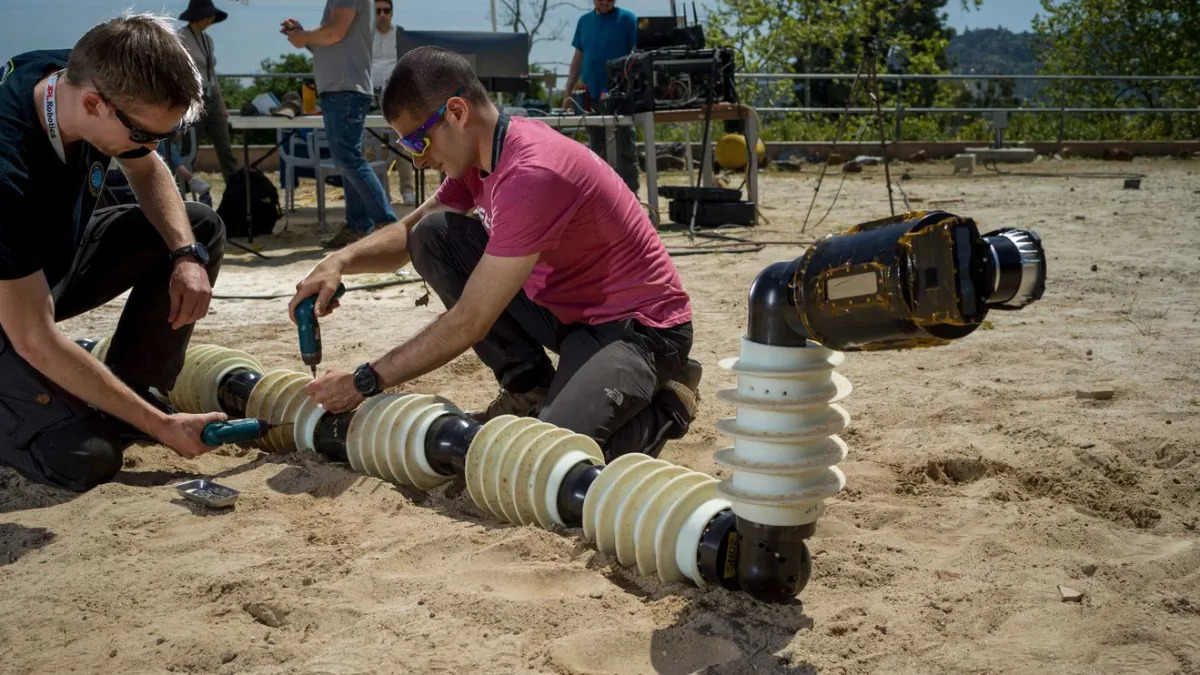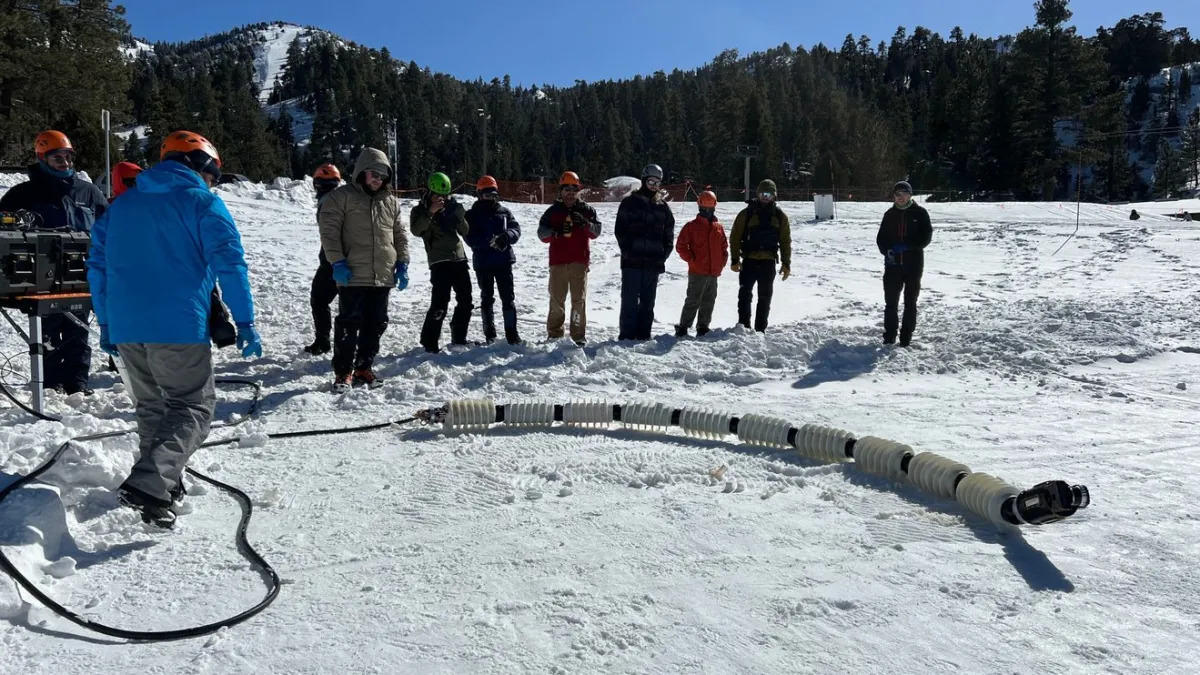NASA's snake robot is designed to search for life in the icy oceans of Saturn's moons.


The "snake robot" form factor has been around for decades. In addition to bringing diversity to the world of automation, this design has several practical features. The first is redundancy, which allows the system to continue operating even after a module is damaged. The second is the body that allows the serpentine system to move through tight spaces.
The latter has made the snake robot an attractive addition to search and rescue teams, as the system can be pushed into locations inaccessible to humans or other robots. Other uses include plumbing and medical technology, with miniature versions that can be moved around pipes and human organs, respectively. Never one to shy away from futuristic robotic applications, NASA's JPL (Jet Propulsion Laboratory) has been exploring ways to use rugged form factors to search for extraterrestrial life.

As is often the case with stories like this, we're still in the very early stages. Tests are currently underway in terrestrial landscapes designed to mimic what such a system might encounter after escaping the moody union of this pale blue marble. That means a lot of ice, as NASA researchers plan to send ice to Saturn's small, cold moon Enceladus.
A 21st century Cassini flyby reveals a water-rich environment, making the icy moon a potential candidate for life in the solar system. The final plan is to use the Exobiology Extant Life Surveyor (EELS) snake to explore the ocean beneath the moon's crust and eventually answer one of the universe's great unanswered questions. is to answer.
"It is designed to be adaptable to traversing marine-inspired terrain, fluid media, closed maze-like environments, and fluids," the research team wrote this month in Science Robotics. This is stated in the published paper. "Enceladus is a key driver in the design of EELS's hardware and software architecture, as well as its mobility and autonomy capabilities. "We use glaciers as an Earth-like ice environment and as a stepping stone to Enceladus. We developed and tested that architecture.''
JPL partnered with Arizona State University on this project. University of California, San Diego. Carnegie Mellon University has a long history of developing snake robots. In fact, HEBI Robotics, a spinout from CMU, developed the modules used in early versions of this system.
"On Enceladus, EELS could slide down narrow geysers on the surface and swim across the vast global ocean, estimated to be 6 miles deep at the Antarctic," he notes, CMU. “EELS is equipped with risk-aware planning, situational awareness, motion planning, and proprioceptive control, allowing it to navigate autonomously far from Earth and human control.”
According to NASA, the system weighs 100,000 grams and measures 4. 4 meters.
